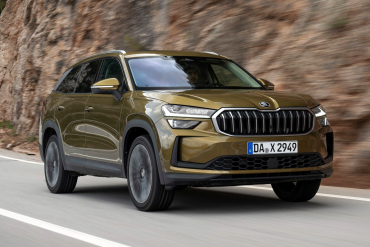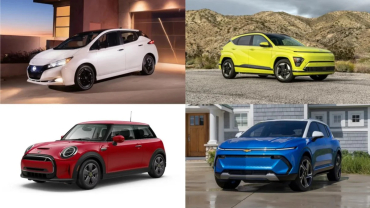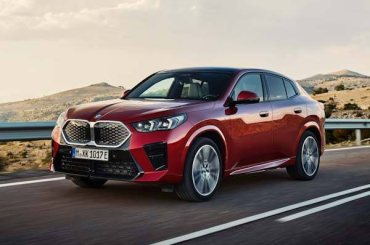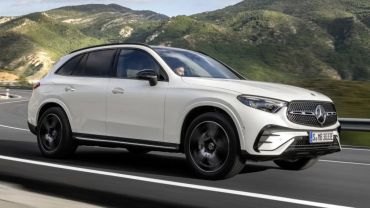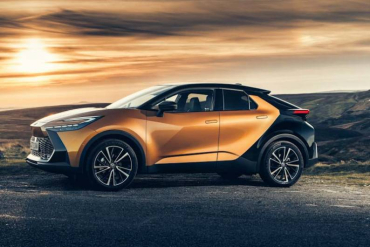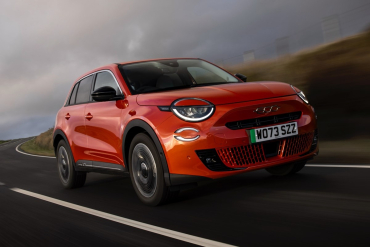
Worldcarblog.com
Skoda Kodiaq SUV (2024) review: as dependable as ever
The new Skoda Kodiaq Mk2 looks a lot like the Mk1, because it is. Any why wouldn’t Skoda stick closely to a winning formula? Since 2016, when it was launched, Skoda has shifted more than 860,000 Kodiaqs. Britain is the second-largest market, behind Germany and ahead of the car’s native Czech Republic.
It’s done so well because it’s always been a keenly priced large family car, offered with five or seven seats. It shares many of its qualities with the Superb estate: easy to get on with, brilliant room in the back, decent to drive.
It relies heavily on technology from parent company VW, but has generally been perceived as being a better package than in-house rivals such as the Seat Tarraco and the now departed VW Tiguan Allspace.
At a glance
Pros: Massively flexible, lots of spec choice, sensible interior, smooth to drive
Cons: Not as good value as it used to be, not particularly exciting
What’s new?
The new Kodiaq is longer and roomier, for passengers and luggage alike. It has some significantly new elements in the cabin, with a greater emphasis on sustainability.
There are new lights, a new logo, a new grille with new air intakes underneath, a new spoiler sticking out the back of the lengthened roof, and some new colours. Put them side by side and you won’t have to think twice about which is the old one and which is its replacement. There are new alloy wheels, from 18 to 20 inches.
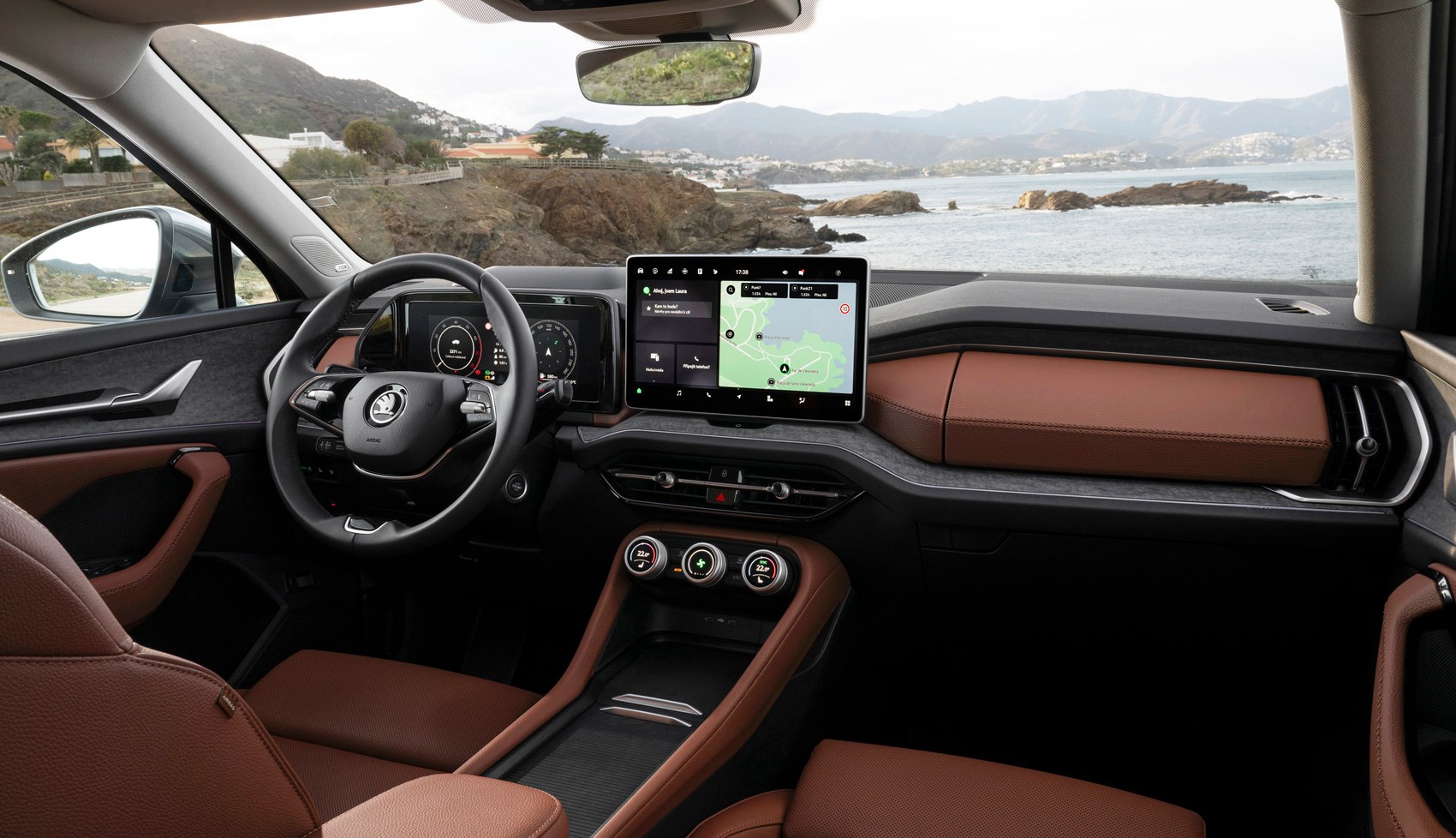
But visually it’s more of the same: not exactly handsome, and not a world apart from various Seat, VW and Audi products, but it succeeds in looking smart, modern, functional and stylish enough.
What are the specs?
Initially there are two spec levels, SE and SE L. Sportline will be along soon, with marginally more visual pizzazz. And later there will be a vRS version.
SE comes with 18-inch wheels, front and rear LED lights, heated front seats and three-zone climate control, plus a bunch of safety-enhancing electronics. SE L – priced from £40,205 – has 19-inch wheels as standard, adaptive matrix LED headlights, an electronically adjustable driver’s seat and electric boot opening. There are also various interior design packages available, called ‘selections’, following the pattern established by the Enyaq.
There are several engines to pick from: a 148bhp mild-hybrid 1.5-litre petrol four-cylinder, a 201bhp 2.0-litre TSI (which is all-wheel-drive only), a 148bhp 2.0-litre diesel four and a 190bhp version (the latter being only for all-wheel drive). Some models are available with DCC adaptive suspension, which when set in Sport mode adds a welcome firmness.
The PHEV is front-wheel drive and five seats only. It has a six-speed DSG automatic transmission, where the others all have seven speeds. But there’s no electric option. If you want a Skoda SUV with EV propulsion, you need to be looking at the Enyaq.
What about the interior?
The best thing about the Kodiaq. There’s nothing radically different or innovative, but it’s a very successful mix of familiar and new, of traditional and advanced.
It’s still very roomy – in fact slightly roomier than before, with an expanded boot and more headroom for those in the third row, while having a sleeker shape that has reduced aerodynamic drag.
If you go for seven seats you get less boot space than five-seaters, and if you go for the plug-in hybrid version you get less luggage capacity than those opting for versions that don’t have a big battery under the floor. But even the least capacious boot is still usefully roomy, and the largest is cavernous: 910 litres with the second row in use, and 2105 litres with them folded down, which is done with a simple flick of a lever.
The passenger seats split 60:40, and can be slid forwards or back to give more boot space or more legroom. Even with the front seats back and the back seats forwards, adults will be comfortable.
Rear passengers get heating controls and chargers plus a centre console of sorts, with oddments space and two cupholders. This can be removed if an adult is going to sit in the middle seat.
Up front the centre console is a masterclass in practicality. As the new Kodiaq is not available with a manual gearchange, the selector has been moved to the steering column, freeing up lots of space, which Skoda’s interior designers have used well. There are up to four cupholders, depending how you choose to arrange it, plus wireless charging areas for two phones, a couple of C-USB ports, and a lot of space in the armrest.
The dashboard now hosts a 13-inch central touchscreen, which is logically laid out and configurable. It can be largely ignored on the move, thanks to three physical multi-purpose dials below the screen, which between them control functions including driving modes (on those models that have modes), volume and heating. It’s an intuitive, effective arrangement.
The steering wheel isn’t overburdened with controls, but those that are present are easy to operate without taking your eyes off the road. The wheel itself may look as though it’s flat-bottomed, but that’s an illusion – it’s actually round, with a decorative protrusion around the 6 o’clock mark.
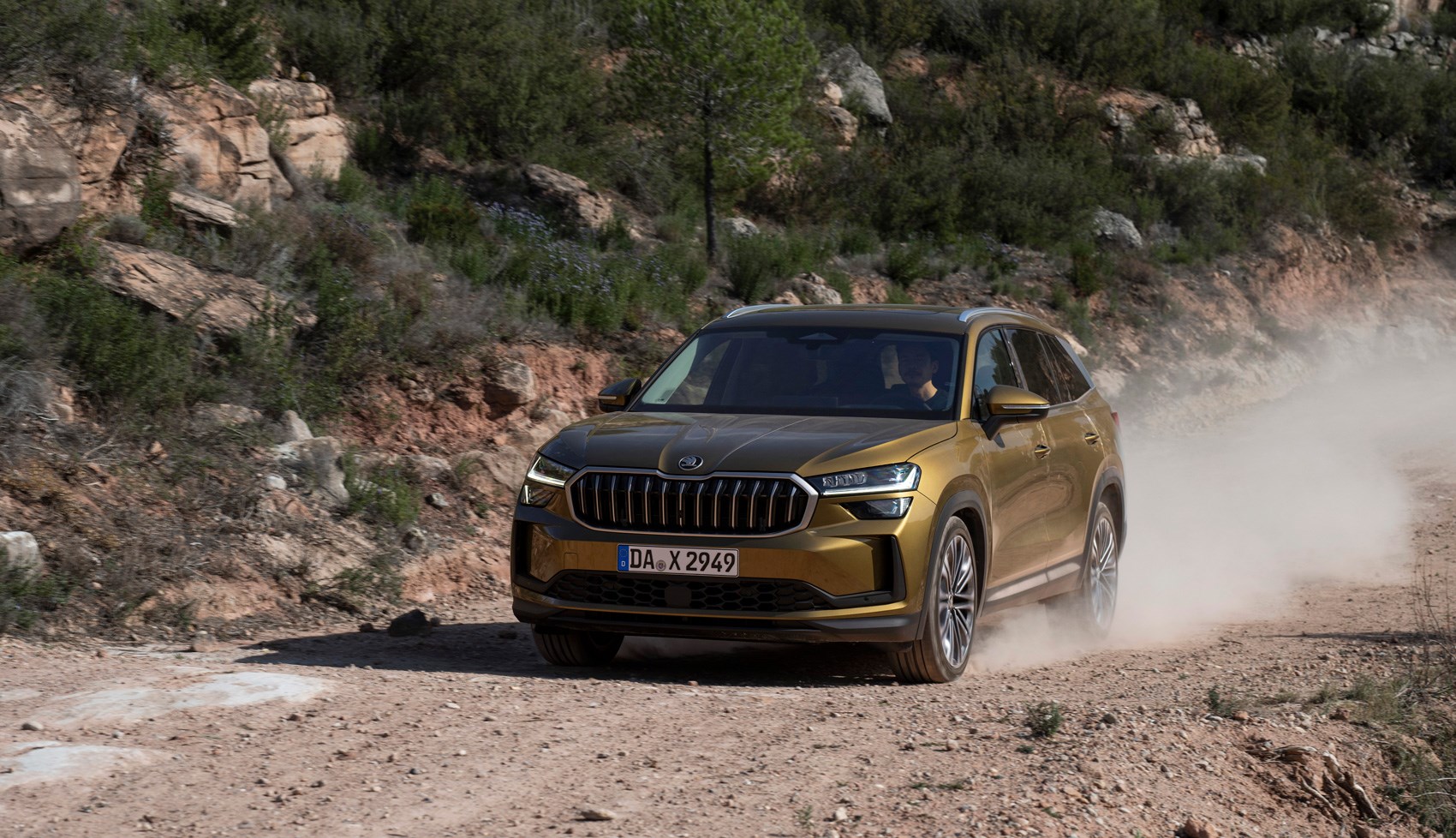
The doors have those useful removable rubbish bins for sweet wrappers and the like in their pockets, and slotted into the driver’s door itself is an umbrella – a familiar Skoda touch, along with the ice scraper clipped into the fuel filler cap. A new detail, along similarly user-friendly lines, is the cap on the screenwash reservoir under the bonnet. It opens up into a funnel that will reduce the amount of wasteful splashing.
Interior fabric choices include a really nice material that is made of recycled plastic, and leather that is treated with coffee-bean waste, rather than chemicals, in the tanning process.
A head-up display is now available, and there’s the option of a big glass sunroof to bring a bright ambience to the cavernous cabin. Despite its size, it doesn’t sound boomy or creaky, thanks to a combination of effective sound-deadening and sturdy construction.
How does it drive?
We’ve sampled four versions so far: two diesels, the mild hybrid and the plug-in hybrid. They weren’t in complete alignment with UK spec, but close enough for us to be pretty confident about their respective strengths and weaknesses.
The mild hybrid, which we drove on a demanding route involving many hairpin bends and some fast motorway miles, returned an impressive real-world 35mpg. But as you might expect from a 148bhp motor in such a big car, it doesn’t offer scorching performance. On those hills, it wasn’t exactly struggling but it certainly wasn’t shining. In more typical family driving, it’s smooth, lively enough and easygoing.
The plug-in hybrid is much perkier, reflected in a 0-62mph time that, at 8.4 seconds, is 1.3 seconds quicker. And if it replicates the official figures, it will top 60 miles of electric-only running, using its 25.7kWh battery, and recharge quickly. But a much longer drive will be needed to check that out.
Quite possibly the sweet spot in the range is the lesser of the two diesels. In five-seat SE guise, it costs £38,945 and combines a 9.6sec 0-62mph time with economy around 50mpg. Its torquey nature makes it feel faster than that, and it’s untroubled by hills or heavy loads. The more powerful diesel is faster off the line, with a 7.8sec sprint time, but it’s thirstier, has a higher CO2 output, and currently only comes as a seven-seat 4×4 in SE L trim, which pushes the price to £56,225.
All this talk of performance is pretty much beside the point. The Kodiaq is not designed to by dynamically outstanding, and is at its best when it’s used for its core tasks of family holidays, the school run, shopping and taking vast quantities of garden waste to the tip.
Ride quality is good, but the body gets wobbly if you hammer it hard through the bends. And the steering is always a little vague and remote. That may change when the vRS version arrives, but for now the Kodiaq is going to bring at least as much pleasure to the passengers as to the driver.
Verdict: Skoda Kodiaq
The Kodiaq shows Skoda doing typical Skoda stuff very well. The details are fantastic, the refinement is good, it drives well but not brilliantly, and it gives off a general feelgood vibe rather than any eruptions of excitement.
There are plenty of choices for buyers wanting family-friendly SUVs, and this remains among the best, certainly when you factor in the cost. Its pricing undercuts the seven-seat Hyundai Santa Fe. The Mercedes GLB, Peugeot 5008 and Land Rover Discovery Sport are classy seven-seat alternatives, but not as roomy.
And if you don’t want seven seats, you have a huge variety of alternatives. Don’t overlook Skoda’s own similarly priced Superb estate, which has the same clever design, technology and detailing as the Kodiaq, but a little more to engage the driver too.
That said, the Kodiaq is a very pleasing all-round package, with the prospect of better versions still to come.
Specs
Price when new: £36,645
On sale: Now
Engine: 1498cc mild-hybrid turbocharged four-cylinder, 148bhp @ 5000rpm, 184lb ft @ 1500rpm
Transmission: Seven-speed dual-clutch automatic, front-wheel drive
Performance: 9.7sec 0-62mph, 129mph, 42.8-47.8mpg, 135-151g/km CO2
Weight / material: 1586kg/steel
Dimensions (length/width/height in mm): 4758/1864/1659
Source: carmagazine.co.uk
Cheapest electric cars in 2024
Just a few years ago, the number of available affordable electric vehicles was significantly smaller. Listing the EVs under $50,000 for 2024, though, is a more laborious undertaking, as the list has grown despite the discontinuation of a couple models, requiring all your fingers and toes to count them. Some of these models haven’t hit the market as of this writing, but will be arriving some time this year.
Depending on how much you’re willing to spend dictates how much you’ll get in terms of acceleration, range, the number of wheels driven, vehicle size and feature content. While most of the EVs on this list have their own merits, you might still want to check out our list of the best EVs under $50,000. And if you want to continue to save money after your purchase, we can also tell you which EVs are the cheapest to own and operate in 2024.
But, to start, you’ll have to get one in your driveway. So, if you want to go electric on a budget, these are the cheapest electric cars you can buy in 2024.
Cheapest electric cars to buy in 2024
Nissan Leaf — $29,280
The Nissan Leaf S is the only car on this list starting under $30,000. The Leaf is also the older model on this list, and may be getting an update in the near future despite Nissan launching the also-affordable Ariya. The Leaf can only be had with front-wheel drive, while many others on this list are rear-drive or available with all-wheel drive. One thing to consider is that it uses the antiquated CHAdeMO charging standard, though a CCS adapter is now available to make it compatible with more charging stations. The small battery provides 150 miles on a charge, with a bigger battery option providing a more respectable 250 miles of range.
Mini Cooper SE — $31,895
The Mini Cooper SE looks very much like the gas-powered Cooper we know and love, but quieter and smoother to drive. The big drawback is its lackluster driving range of 114 miles. This makes it a fun urban runabout, but limits practicality if you only have one car or need to put adults — or even child car seats — in the back seat.
Hyundai Kona Electric — $34,050
The Hyundai Kona Electric is another fun, front-wheel-drive EV, but packs more space for people and cargo after its redesign for the 2024 model year. It’s offered with two drivelines, but neither can be had with AWD, simplifying the math a bit. The Electric SE has a 133-horsepower motor mated to a 48.6 kWh battery with 197 miles of range. The Electric SEL and Limited get a larger, 201-horsepower motor paired to a 64.8 kWh battery, which Hyundai says is good for 260 miles.
Fiat 500e — $34,095
The Fiat 500 returns to the U.S. in electric form in 2024, offering a tiny competitor to the Mini Cooper SE. As of this writing, we’ve only driven the essentially identical European version as we await the imminent North American launch. Only one version of the Fiat will be available at launch, the 500e RED, which is a special edition collaboration with the RED charity that raises money to combat AIDS. The new 500e will offer 149 miles on a charge, which is not great, but perhaps to be expected as one of the cheapest EVs you can buy. There’s also only so many batteries you can pack into such a small car.
Chevrolet Equinox EV — $34,995
Another EV that hasn’t launched as of this writing, the Chevy Equinox EV takes the place of the Chevy Bolt — at least for now — as the brand’s cheapest electric offering. The base 1LT comes equipped with a single-motor front-wheel drive powertrain that produces 210 horsepower and 242 pound-feet of torque. It’s paired with the smallest battery pack, and Chevy estimates a 250-mile range on a full charge, but you can get higher-spec Equinox EVs that still won’t break the bank.
Volvo EX30 — $36,245
Coming some time in 2024, the Volvo EX30 is surprisingly affordable for this luxury nameplate. And, as we wrote in our first drive, “Volvo’s new entry-level EV is inexpensive, not cheap.” The single-motor variant has a nice, simple interior, drives well and is chock full of features. Jumping up to the Twin Motor Performance version, though, adds almost $10,000 to the price.
Fisker Ocean — $38,999
The Fisker Ocean is a newcomer on the EV scene, and this small crossover starts at an affordable price. The front-wheel-drive Fisker Ocean Sport starts under $40,000, gets 231 miles of range, and does 0-60 in 6.9 seconds. Prices jump significantly from there as you move up the trim ladder, though. You should know, however, that the Ocean has had many reports of serious problems, leading to canceled reservations and a NHTSA investigation. Buyer beware.
Tesla Model 3 — $40,380
The popular Tesla Model 3 is one of our favorite electric sedans, and one of the top EVs under $50,000. The base model comes with rear-wheel drive and 272 miles of range. The Dual Motor AWD model still starts well under $50,000, with more power and 341 miles of driving range.
Kia Niro EV — $40,975
The Kia Niro is one of our favorite small SUVs, and the electric version adds fantastic efficiency to the well-rounded package. It doesn’t offer all-wheel drive, but it does provide 253 miles of range on a single charge. If it’s a little too much money for you, try the related Hyundai Kona Electric that offers a considerably cheaper, short range version.
Volkswagen ID.4 — $41,160
The VW ID.4 electric crossover starts just over $40,000 with rear-wheel drive. As of this writing, driving range hasn’t been announced for the 2024 model year, but we expect somewhere around 209 miles from the 62-kWh battery, based on the 2023 model. You can move up to a bigger battery, though, and all-wheel drive is available (although the price is much higher than typical because it also adds considerably higher performance). We like the driving dynamics and the roominess of the cabin, but interior controls and the infotainment system can be frustrating to use.
Mustang Mach-E — $41,695
An electric crossover worthy of the Mustang name, the Ford Mustang Mach-E is a thoroughly entertaining and attractive vehicle with a lot to love. The entry-level Select RWD trim offers 250 miles of range and a 0-60 time of 6.3 seconds. You can get all-wheel drive for $3,000 more, with a range of 226 miles. More power and range comes at a higher price.
Hyundai Ioniq 5 — $43,175
We’re huge fans of this funky, retrofuturistic hatchback-looking crossover EV from Hyundai. The cheapest SE Standard Range has rear-wheel drive and 220 miles of range, but you can get it with a bigger battery for 303 miles of range and keep it under $50,000. All-wheel drive will cost quite a bit more since it adds considerably more performance as well as improved traction. Regardless of powertrain, the Hyundai Ioniq 5 is a fun, roomy, feature-rich EV with excellent charging speeds.
Hyundai Ioniq 6 — $43,565
Using the same E-GMP platform as the Ioniq 5, the Hyundai Ioniq 6 is a sleek electric sedan with even more driving range. The base SE RWD gets 361 miles on a charge, and moving up to AWD still nets 316 miles of range at a great price. It’s also great to drive, providing sportier driving dynamics than the 5. We called the Ioniq 6 the “best alternative to a Model 3.”
Kia EV6 — $43,975
Yet another model based on Hyundai Group’s E-GMP electric vehicle platform, with its long range and fast charging speeds, the Kia EV6 has a sportier vibe than the lounge-like Hyundai Ioniq 5. The cheapest EV6 Light trim has rear-wheel drive, and a 58-kilowatt-hour battery pack good for 232 miles of range, though you can get more driven wheels, more range and more power for more money.
Toyota bZ4X — $44,420
Toyota’s first real EV, the bZ4X offers a good value in its front-wheel-drive versions, and is easier for most people to live with than its rear-drive competition. Just don’t expect something as fully realized as the exceptional Ioniq 5 and EV6, nor even the characterful but flawed ID.4. It has a 71.4-kilowatt-hour battery that returns an estimated 252 miles of range with the XLE trim and 242 with the Limited. All-wheel drive adds price, but diminishes driving range considerably.
Nissan Ariya — $44,555
The Nissan Ariya, the brand’s second electric vehicle, impresses with strong specs, compelling value and knock-out interior. The base Engage FWD provides 216 miles, though you can get all-wheel drive and more range if you’re willing to crest $50,000. Charging is on the slow side compared to much of the competition, though, particularly those from Hyundai and Kia.
Tesla Model Y — $46,380
The Tesla Model Y is a more traditional entry than the larger, more expensive Model X SUV. It’s more akin to the also-affordable and also-great Model 3 sedan, with normal doors and rear seats that fold to give you flexibility between passengers and cargo. It has a minimalist interior, with many of the vehicle functions accessed through the large infotainment screen, for better or worse. The base rear-wheel drive model gets a respectable 260 miles of range, but moving up to the Model Y Long Range, which offers 330 miles of driving and all-wheel drive, puts you just a few hundred dollars over the $50,000 mark. Still, the Model Y is a popular EV, and it, like the rest of the Tesla brand, has its fair share of fans. And let’s not forget that Tesla also has its excellent Supercharger fast-charging network. Furthermore, as of this writing, Tesla has cut prices on the vehicles in its inventory after producing so many of them, so there could be hotter deals on backlog units.
Subaru Solterra — $46,735
Subaru’s first EV, the Solterra electric crossover, is basically the same vehicle as the Toyota bZ4X with which it was co-developed. One key difference: even the base Premium trim comes with all-wheel drive — kind of a Subaru thing to offer as a standard feature — and 228 miles of range. It’s a great option for the Subaru faithful who have been waiting for an electric vehicle to get them more quietly to the great outdoors they love.
Vinfast VF 8 – $47,200
Vinfast is a Vietnamese automaker, and its cheapest VF 8 EV is only available in California as of this writing. We haven’t had the chance to review the VF 8 yet, so we can’t recommend it to you (reviews by other outlets have not been favorable, to say the least). The cheapest Eco trim offers an EPA-rated 207 miles of range.
Honda Prologue — $48,795
The Honda Prologue crossover is the Japanese automaker’s first mass-market EV for the U.S. market, but under the skin, it is built on GM’s Ultium electric vehicle platform, features an interior using GM parts and is even built in a GM factory in Mexico. Hitting dealers in March 2024, the base, single-motor EX trim provides an impressive 296 miles of range. The comparable Chevy Blazer EV won’t be available in such an affordable trim level for quite some time.
Source: autoblog.com
BMW iX2 review - Driving Experience, Design, Build and more...
Another BMW EV, this time a small, very trendy one, the iX2. Jonathan Crouch takes a look at what's on offer.
Ten Second Review
The market's first fully electric compact coupe crossover is this car, the iX2. It's basically an iX1 in drag of course, but there's a little more to the iX2 that that. It's sharper to drive and has a degree or two more of the personality missing from its EV showroom stablemate. So many small EVs today are disappointingly sterile in character. This one at least, is a little different.
Background
For most of the last decade, BMW's smallest full-electric offering was the innovative and charismatic little i3. For any who might have found its conventional-looking iX1 replacement in 2022 a touch on the dull side, the Munich maker has brought us this, the iX2.
As with the combustion-powered second generation X2, BMW's tried to do a little more here than simply provide a sleeker-looking version of the model that sired it, in this case the iX1. So we're promised sportier handling to go with the trendier Coupe-SUV visual vibe. The price here might be pushing up towards the kind of level that would get you a slightly larger lower mid-sized EV crossover. But the Bavarian brand hopes that this iX2's combination of looks, life and fashion might make you want one anyway.
Driving Experience
Initially, the iX2 is only being offered in top xDrive30 form, which has two electric motors, AWD and 313hp (62mph in 5.6s). Drive range is up to 266 miles, though to achieve that, you'd have to select the most frugal 'Efficient' MyMode drive setting and make full use of all the various provided energy recuperation settings. There are selectable high, medium or low braking energy recovery settings, or you can simply leave the system in its automatic adaptive setting. Do that and thanks to intelligent networking, the drive system can use navigation and driver assistance system data to adjust how much power is recuperated, according to the respective traffic situation.
As with the combustion X2, sharp Sport steering is standard, as is adaptive M Suspension with adjustable and frequency-selective dampers. The Bavarians have also included rear actuator wheel slip limitation to maximise agility, with a traction control system integrated into the engine management. This allows corrective inputs to be applied up to ten times faster than with conventional systems, benefiting traction, poise and handling stability. The suspension system's been designed with special axle kinematics and lift-related damping on the front axle. And there's a powerful integrated braking system with four-piston fixed-caliper front discs.
Design and Build
Visually, this iX2 isn't much differentiated from its combustion-powered X2 showroom stablemate. The front is dominated by an enormous pair of blanked-off kidney grilles which can be illuminated and are flanked by LED headlights that extend back into the flared front arches. In profile, the roof line slopes back dramatically, before being truncated by a blunt rear end. Striking? Certainly. Pretty? Not so much.
And inside? Well if you've tried the iX1, you'll know what to expect: a very avant garde cabin based around a curved glass fascia panel incorporating a 10.25-inch digital instrument display and a 10.7-inch central touchscreen. The iDrive software behind the set-up is BMW's 'Operating system 9' package, which gives you a new 'Quick Select' feature, allowing you to activate key functions without endless scrolling through sub-menus.
As with the ordinary X2, the rear bench is a little more spacious than you might expect and doesn't have that much less headroom than the iX1. Out back, there's a 525-litre boot, which is 10-litres more space than you'd get in an X2 sDrive20i and, interestingly, 35-litres more than you'd get in a supposedly boxier iX1. That extends to 1,400-litres with the rear seats down.
Market and Model
Pricing for this iX2 started from launch from just over £56,500 in xDrive30 AWD form. That's over £9,000 more than the combustion alternative, the X2 M35i xDrive. With the iX2, there's only one trim level - 'M Sport'. That's the one most customers would have chosen anyway because it provides the various visual cues this car needs to look in any way sporty. Specifically, this trim level includes large side air intakes integrated into the front apron, a body colour border along the lower edge of the body, M-specific side skirts, M High-gloss Shadowline exterior trim and a rear apron with integrated diffuser.
Adaptive M suspension and double-spoke 19-inch M light-alloy wheels are also part of the M Sport specification, together with sport seats, an Alcantara-covered instrument panel, an anthracite-coloured headliner and an M leather steering wheel with gearshift paddles. On the options list is the 'M Sport Pro' pack. Among the features this adds are M High-gloss Shadowline exterior trim with extended elements, M lights Shadowline exterior trim, an M rear spoiler, an M Sport braking system with red-painted callipers and M seat belts.
There's a comprehensive media package that includes 'Apple CarPlay' and 'Android Auto' wireless smartphone integration. And BMW ConnectedDrive upgrades keep the car up to date with the latest software, with upgrades ranging from new services to improved vehicle functions. Specify the 'Comfort Access' pack and you'll get the 'BMW Digital Key Plus' feature, which will allow you to lock or unlock your iX2 with your Apple iPhone. And you'll be able to share this functionality with up to five users using the 'My BMW app'.
Cost of Ownership
This iX2, as we told you in our 'Driving' section, can go up to 266 miles on a single charge. For that, you'll need to select the most frugal of the provided MyMode drive settings - 'Efficient'. And you'll also need to make full use of the brake recuperation energy you'll get while driving in the provided 'B' gear setting. Recuperation of up to 120kW can be generated via the brake pedal regardless of the driving mode. If you're rapidly running out of battery charge, you might want to engage the provided 'MAX RANGE' function, where drive power and top speed are carefully restricted and comfort functions scaled back, allowing range to be increased by up to 25%.
The iX2 can support single and three-phase AC charging up to 11kW, which allows the battery to be fully replenished from empty in 6.5 hours. As an option, you can increase charging capacity to 22kW, which allows the battery to be fully replenished from empty in just 3 hours 45 minutes. DC charging at up to 130kW makes it possible to boost the battery level from 10 to 80% in 29 minutes, or increase range by 75 miles in just 10 minutes.
Summary
We're starting to see small EVs that are more credibly sporting - and this iX2 is one of them. Obviously, like every full-battery crossover, it has to overcome a prodigious level of weight, but there's lots of advanced engineering here to mitigate against that. As a result, you might well find yourself having more fun at the wheel of this BMW than you might ever have expected to in a small EV.
Of course, you're going to need to like the way it looks: not everyone will. But the iX2 isn't intended to attract everyone, nor would it be as appealing if it was. Few people in your neighbourhood or company car park will have one. An EV you might want not just because it's an EV but because it's a BMW. In the truest sense.
Source: rac.co.uk
"It's time for Europe to respond to the threats posed by Chinese car brands"
"It's time for Europe to respond to the threats posed by Chinese car brands," said Renault Group CEO Luca de Meo, urging European Union countries to collaborate in addressing the imbalance in competition with China and the USA.
De Meo suggests that this approach would ensure the future of the automotive industry in Europe, similar to what was done in the case of the Airbus airline.
"We see increasing signs of weakness that could be cause for real concern if nothing is done," he stated in a public letter ahead of the European Parliament elections, as reported by Automotive News Europe.
De Meo, also the president of the European Automobile Manufacturers' Association (ACEA), published the letter in several languages as the leader of the Renault Group.
Among the proposals is for Europe to accelerate the pace of replacing older cars through a special fund over the next decade.
"The European automotive sector is under pressure from multiple fronts," he said, citing the transition to software-defined vehicles, increasing regulations, the need to invest in new technologies, price volatility of raw materials like lithium, and the need for workforce retraining to avoid mass unemployment.
"China rules, the USA stimulates, and Europe regulates," he wrote, emphasizing the longstanding issue of EU norms and regulations.
Among De Meo's proposals is support for the production of small, affordable cars, which he said could create 10,000 jobs.
"We see increasing signs of weakness that could be cause for real concern if nothing is done," De Meo wrote in the public letter, adding that "the center of gravity in the automotive industry has shifted to Asia, where about 52% of all cars sold in that region are produced, compared to 20% in Europe and 24% in North and South America."
As a consequence of Beijing's support for the electric car industry and the size of the Chinese domestic market, exports to Europe have increased fivefold since 2017, with the total trade deficit between Europe and China now standing at 400 billion euros.
2025 Mercedes-Benz GLC-Class gains PHEV model
Joining the recently redesigned regular Mercedes-Benz GLC-Class and its fastback counterpart will soon be a plug-in hybrid variant. The powertrain option has been absent since the compact luxury SUV was redesigned. Called the 2025 GLC 350e (like its predecessor), the new hybrid offers similar power, but likely much improved range.
The basics sound pretty familiar, with the GLC 350e combining a turbocharged 2.0-liter four-cylinder and an electric motor, with the latter making 134 horsepower and 325 pound-feet of torque on its own. Combined output is also similar at 313 horsepower (down just 2 from before), but significantly less combined torque at 406 pound-feet (from 516). That its 0-60 mph time is now 6.6 seconds rather than 5.6 may be related to that change. All-wheel drive is standard.
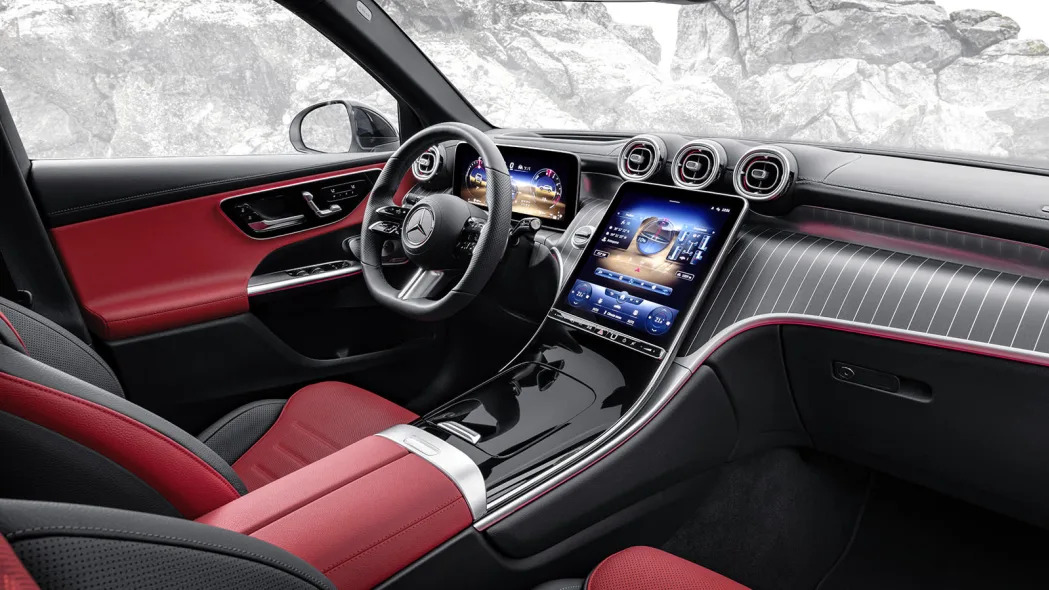
While not as quick, the new PHEV should go much farther on a charge thanks to its 24.8-kWh battery pack. That's 11.3 kWh more than the old battery, nearly doubling its capacity. On the WLTP loop (as U.S. EPA range and fuel economy haven't been announced), the GLC 350e has a seriously impressive range of 81 miles on electricity alone. That will likely be reduced on the EPA test cycle, but will undoubtedly be an improvement over the old model's 22 miles. Somewhere around 40 miles seems like a reasonable expectation. In addition to the added range, AC charging speeds have increased from 7.4 kW to 11, and now the GLC supports DC fast charging up to 60 kW.
The GLC 350e will be offered in three versions, the standard trim, Exclusive and Pinnacle. The standard features list is fairly extensive including a 12.3-inch instrument screen, 11.9-inch infotainment screen, navigation, wireless Apple CarPlay and Android Auto, wireless phone charging, heated seats, dual-zone automatic climate control, ambient lighting, parking sensors and power hatch. On the safety front it has automatic emergency braking, blind-spot warning and automatic lights.
The GLC 350e goes on sale in the second half of this year. Pricing will be announced closer to its on-sale date. It will certainly be priced above the roughly $50,000 of the base GLC 300 4MATIC.
Toyota C-HR PHEV review
Is it really necessary to have PHEV power in a Toyota C-HR? Jonathan Crouch decides.
Ten Second Review
Top versions of the second generation C-HR gain the PHEV powertrain Toyota thought unnecessary in this small coupe-crossover model's original predecessor. You could almost treat the resulting confection like a full-EV for commuting duties, but inevitably, there's a price to pay for the extra sophistication.
Background
Toyota's always seemed very undecided about PHEV technology. Having virtually invented it back in 2012 for a top version of the Prius, it took nearly another decade for the brand to offer it again on another model (the RAV4). Questions to the company as to why smaller Toyotas couldn't be had with Plug-in Hybrid tech were met with the response that the benefits of PHEV were "largely illusory" and that a better solution was to concentrate on conventional Hybrids.
But everyone's allowed to change their mind and Toyota clearly has in developing the second generation C-HR crossover we're looking at here, which now has a headlining PHEV model at the top of its line-up. Most sales will continue to be of the self-charging conventional Hybrid versions of this model, but let's take a closer look at whether plugging your C-HR in might be a credible option if you're planning to spend big on this model line.
Driving Experience
Most PHEVs actually aren't very efficient at all, once their EV range is used up. When that happens, they usually revert to a conventional petrol engine made even less efficient by the fact that it has to lug along the extra weight of a Plug-in Hybrid battery pack. The C-HR PHEV has that too, but at least its core petrol engine is a self-charging full-Hybrid, which makes it rather unique amongst models of this genre.
The 2.0-litre engine in question (borrowed from the faster of the two standard Hybrid models) is mated to a 161bhp electric motor powered by a 13.8kWh battery that, when fully charged, can offer an EV range of up to 41 miles. Only the front wheels are driven - with up to 220bhp, which allows 62mph to be dispatched in 7.3s en route to 112mph. To cope with the extra power (and weight), Toyota has added new twin-piston brakes and new ZF frequency-sensitive shock absorbers supposed to improve the ride over high-frequency bumps. There are three driving modes and you can alter the strength of regenerative braking right up to a 'B' setting that offers so much retardation off-throttle that you hardly ever need to use the brake pedal.
As with the ordinary Hybrid versions of this second generation C-HR, Toyota says it's worked on the handling, introducing a wider track and tweaking multi-link rear suspension elements from the larger RAV4. It all sits on the company's usual TNGA-C platform, borrowed from the Corolla. And Toyota says that it's improved auto gearbox response too, though you shouldn't expect too much there.
Design and Build
Apart from different badgework and an extra charging flap, there are no visual differences to set this PHEV model apart from more ordinary C-HR Hybrids. If you liked the edgily-styled first generation C-HR, it's likely that you'll also appreciate the visual efforts Toyota's made with its replacement. As before, dramatic lines, sharp bodywork creases and sculpted headlights catch the eye. Plus the nose gets Toyota's latest 'hammerhead face', there are flush-fitting pop-out door handles and pricier trim levels get two-tone paintwork. A new pre-coloured resin finish for the bumpers also gains gives a two-tone vibe. Contrary to expectations, this MK2 model is a little smaller than its predecessor, 35mm shorter and sitting 15mm lower. It's 45mm wider though and has bigger wheels - up to 20-inches in size.
The cabin features various recycled plastic fabrics, contrasting soft-touch surfaces and a pair of so-called 'sail panels' that stretch from the fascia top into the doors. A 12.3-inch digital dial display features for the instruments and the centre screen is also 12.3 inches in size. You sit quite high, but it's not enough to alleviate the rather compromised rearward visibility.
You access the rear through conventionally-sited door handles. And once inside, you'll be tight on legroom, though Toyota claims that extra space for heads has been freed up by the fact that the optional panoramic glass roof doesn't need a shade. Rear seat visibility is limited and the sloping roof line restricts ceiling space. The boot's restricted too: to extend it, the seat back splits 60:40.
Market and Model
Prices for the second generation C-HR model start from just over £31,000, but you'll be paying in the £42.000-£45,000 bracket for this PHEV version. The 'GR Sport' trim level many will want has 20-inch machined alloy wheels, a head-up display and a JBL premium audio system. Along with bi-tone exterior paintwork, front sports seats with suede-effect upholstery, ambient interior lighting, a panoramic roof and a 360-degree panoramic view monitor.
That's in addition to the usual very complete rosta of C-HR spec. You can tick off a powered tailgate, cloud-based navigation, a wireless smartphone charging mat, 'Apple CarPlay' and 'Android Auto' smartphone-mirroring and an auto-dimming rear view mirror. Plus there's rear privacy glass and a parking sensor system with automatic brake function. There are heated seats and you get a 12.3-inch instrument display, along with a 12.3-inch 'Toyota Smart Connect+' central infotainment screen.
The safety and assistance package includes the latest, third generation Toyota Safety Sense package, with functions including a Pre-Crash System, Adaptive Cruise Control, Lane Trace Assist, Road Sign Assist and Automatic High Beam. In addition, there is a Blind Spot Monitor which links to Safe Exit Assist to help prevent doors being opened into the path of vehicles approaching from the rear.
Cost of Ownership
For this PHEV C-HR variant, you're looking at up to 294mpg on the combined cycle and up to 19g/km, with an EV range of up to 41 miles; in the real world, it'd be more like 35 miles. That claimed range figure puts the car in a very favourable 8% Benefit-in-Kind taxation bracket - which for many customers could be the clincher for purchase. Helping with the range figure is the fact that this second generation design is around 2% more aerodynamically efficient than its predecessor.
On the move, you can select an EV mode or use a Hybrid setting that will work with the sat nav and uses Geofencing technology that will prioritise electric power in low-emission zones. The navigation system can also suggest a route that will take into account your state of charge and identify possible charging spots. In a C-HR PHEV, you can also adjust the strength of the regenerative braking.
The 13.8kWh battery can use a 7kW charger for a home top-up that will take two and a half hours. Whatever C-HR you decide upon, as usual with Toyotas these days, if you keep the car serviced at a franchised dealer, the warranty can be extended up to a maximum of 10 years.
Summary
For a few people, this Plug-in Hybrid C-HR will be the ideal small coupe-crossover confection. Hybrid power when you need an engine. And you can treat the car like a full EV when you don't. What's not to like? Well the added weight for one thing. And the significant price premium for PHEV power for another. So you'll either be a sceptic or a convert when it comes to this model.
But then the C-HR has always garnered that kind of reaction, so why should this second generation model's more sophisticated high-tech flagship variant be any different? In a world undecided about the future of EVs, it might just be an ideal fashionable small runabout for those who don't mind a premium price tag. And then again, it might not. Everyone will have their own opinion, just as they always have with the C-HR.
Source: rac.co.uk
Fiat 600e review - What’s it like inside? What’s it like to drive? Range, charging and efficiency.
Pros & cons
PROS
Proven Stellantis running gear
Attractive pricing
Comfortable ride
CONS
Rear legroom is tight
Boot space isn’t fantastic
Steering is overly assisted
Fiat 600e Overview
Although the electric car market is already rammed full of SUVs, the Fiat 600e adds another contender to the list. It’s a dinky thing, although it should be just about big enough for family duties, with a hybrid version on the way for usefully less money.
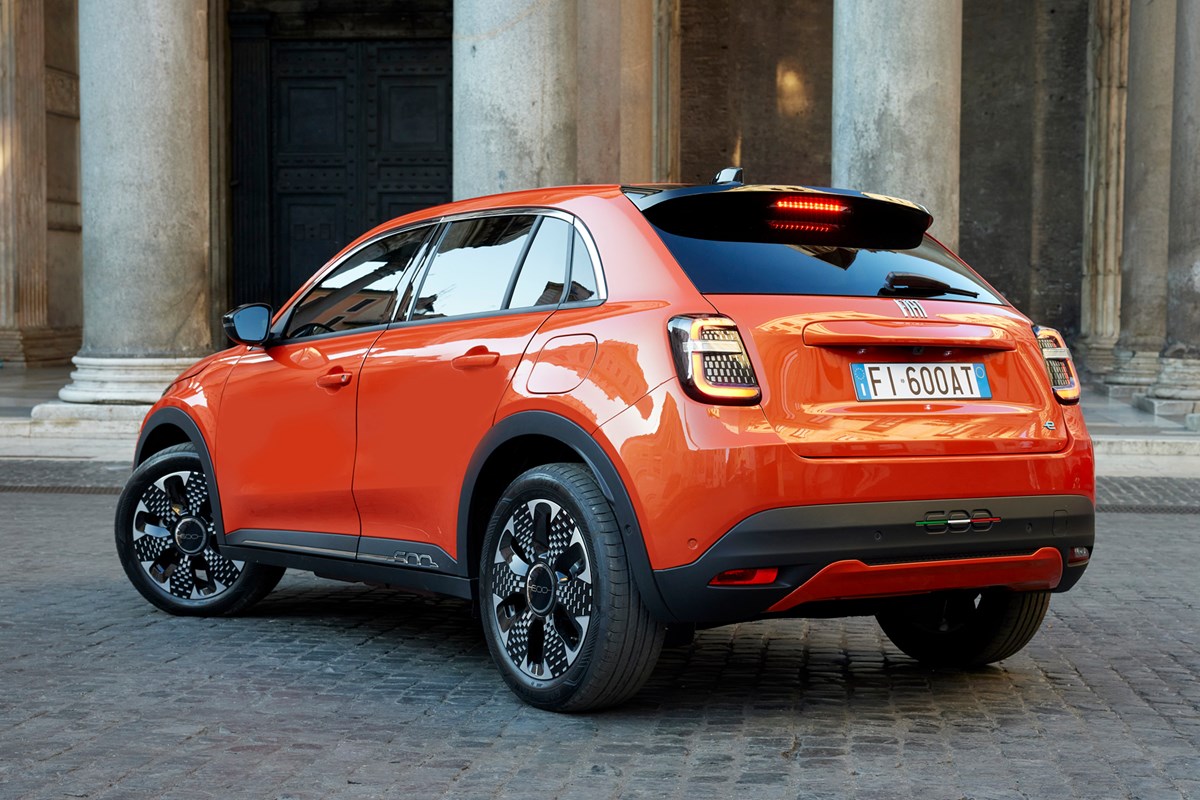
Fiat’s plan for the 600e was to take the appeal of Fiat 500e city car and upscale it to a more practical package. The firm made its task as easy as possible by pinching the 600e’s platform, motor, battery pack and interior technology from the Stellantis parts bin. As such, it has much in common with the new Jeep Avenger, not to mention the DS 3, Peugeot e-2008 and Vauxhall Mokka,
Using existing components isn’t such a bad thing, though. Competition in the compact electric SUV segment is fierce right now – and that means buyers simply aren’t prepared to tolerate poor quality or iffy reliability. The trouble is that the components Fiat used to build the 600e have, until this point, only delivered average results. None of the Stellantis electric SUVs are particularly inspiring to drive and they all offer decidedly average range figures, which means this little Fiat has its work cut out if it’s aiming for the top of the class.
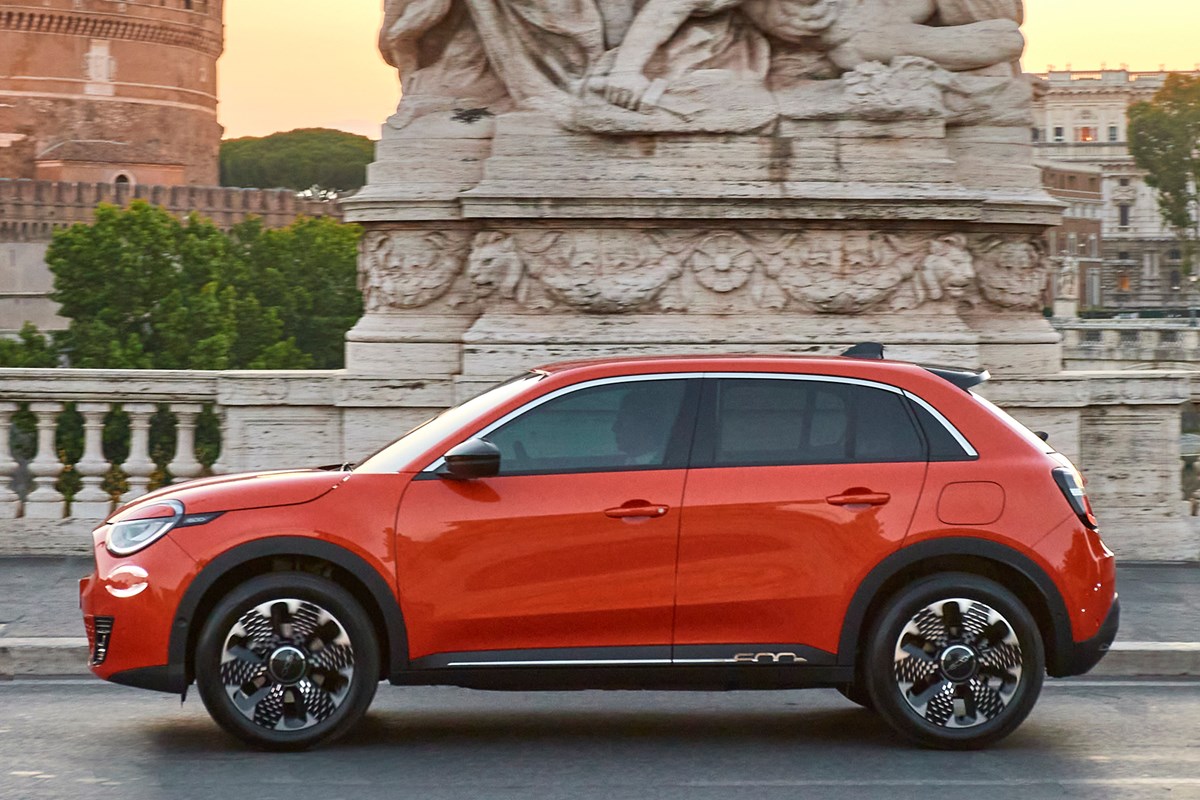
What’s more worrying for Fiat is that, if the 600e doesn’t deliver, drivers will simply shop for one of its many rivals. Key competitors include the Kia Niro EV, the new Hyundai Kona Electric and the equally funky Smart #1. At least the 600e has price on its side, undercutting most rivals even before you’ve factored in a chunky grant from Fiat.
What’s it like inside?
It’s a lot like the Jeep Avenger. The 600e’s centre console, 10.25-inch infotainment system and digital gauge cluster are all identical to the Jeep’s. Fiat has tried to distance its car from its closest sibling, though, by fitting it with a daintier dashboard panel and a curvier instrument binnacle, both of which it says are nods to the original Fiat 500.
It’s certainly an attractive setup, especially when teamed with the cream upholstery offered on the range-topping La Prima model. Practicality is hit and miss but, to be fair to Fiat, we’ll start with the good bits.
Fiat says the 600e’s various cubbies and door bins amount to an extra 15 litres of storage space, which means it should be easy to keep the cabin looking tidy. We’re especially fond of the storage bin between the two front seats. That iPad-style magnetic flap hides a cubby large enough to lose your arm in – and it even features a wireless smartphone charger. There’s plenty of room for people, too, with good headroom and a driver’s seat that goes a long way back.
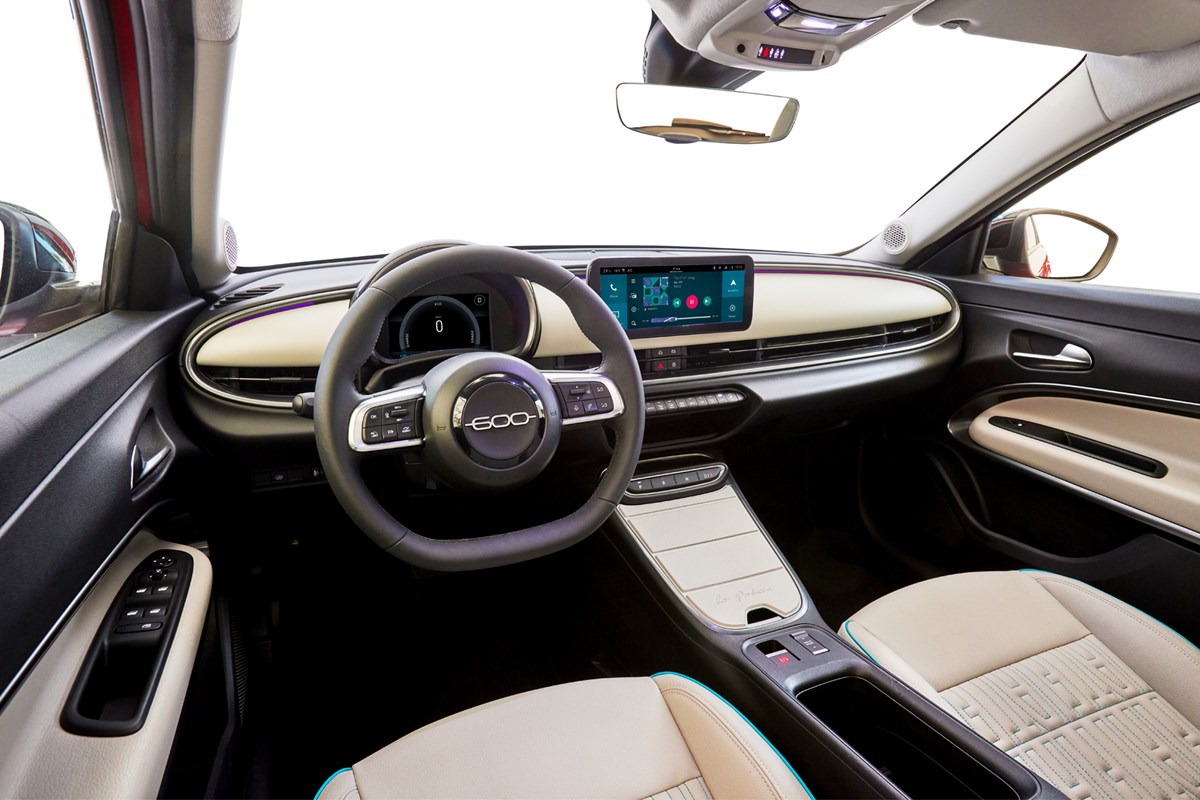
Space in the back is less impressive. If you’re a tall passenger behind even an average-height driver, your knees will press far enough into the front backrest to function as their lumbar support. It’s fine for kids and short families, but we’d point you towards the Smart #1 if rear space is important.
Boot space isn’t fantastic, either. At 360 litres, its a whopping 115 litres smaller than the Kia Niro EV and 110 litres smaller than the bargain-basement MG ZS EV. However, if you fold the rear seats flat, the Fiat 600e’s boot space expands to a perfectly respectable 1,231 litres.
Quality is reasonable overall, although you can see where Fiat has cut some corners. The dashboard and centre console storage tray lid feel high quality, but the plastic used on the centre console and door cards feels like it was pulled from a supermini. This is to be expected given then (relatively) affordable price.
Fiat has also very obviously raided the Peugeot/Citroen parts bin for switchgear – and it hasn’t done a convincing job of integrating the parts into the 600e’s cabin. The drive mode and electronic parking brake switches on the centre console, for example, look like complete afterthoughts.
What’s it like to drive?
Again, it’s a lot like the Jeep Avenger only softer. But that’s to be expected given the mechanical similarities between the two cars. The 600e’s wheelbase (the distance between the front and rear axles) is identical to the Avenger’s, and the suspension is identical save for some slightly different tuning.

Despite this, the 600e is noticeably softer than the Avenger which we think is a good thing. While you certainly hear the suspension working away, it does a good job of smoothing off ruts and bumps. You do feel it bobble around a little on broken surfaces, yet it never feels floaty or uncontrolled. At this price point, it’s one of the comfier small SUVs out there.
It’s reasonably refined, too. Wind noise is kept in check well (thanks in part to the car’s aerodynamic egg-shaped body) and road noise isn’t too intrusive. Wide expansion joins and deep craters will send a judder through the cabin, but the impact felt through your backside is less severe than you get in an Avenger. Or a Cupra Born, for that matter.
There is a trade-off for this comfort, though. Body roll. The 600e really leans over in the corners if you attack them enthusiastically. Push it into a corner especially hard and the stability control system will come down on you like a tonne of bricks, snatching at the brakes to extinguish your fun. While no small electric SUV is a laugh-a-minute, the Smart #3 feels that bit keener.
The steering really doesn’t inspire confidence. There’s very little feedback and its weight doesn’t build in line with your speed which can make it tricky to judge how much lock to apply when cornering on faster roads. You do key into it eventually, while Sport mode adds a little weight if no more feedback.
At least the electric motor is a proven unit. It’s the same 156hp electric motor found in the Jeep Avenger and the updated Vauxhall Corsa Electric – and it’s perfectly adequate. Fiat says it allows the 600e to sprint from 0–62mph in nine seconds flat before reaching a top speed of 93mph.
Rivals such as the Kia Niro EV and Hyundai Kona Electric are noticeably faster in a straight line. The fastest Kona, for example, has 218hp and it can get from 0–62mph in 7.8 seconds, so it feels much spryer. Still, the 600e has more than enough poke to carve up your average petrol-powered hatch at the lights.
Like most EVs, Performance tails off as you build speed, but it has just enough power left in the tank to consider an overtake approaching the national speed limit. You can also control the response and performance of the electric motor by cycling through the car’s drive modes. The motor’s maximum output is limited in Eco and Normal modes to conserve battery power – but in Sport mode you get the full 156hp.
Thankfully, and unlike some EVs, you can access all 156hp in any mode by planting your foot flat to the floor, pushing down past the kickdown switch. That’s handy if you’ve got an eye on range but suddenly need an additional uplift in performance.
Range, charging and efficiency
The 600e is based on the same e-CMP2 architecture found under most Stellantis small electric cars, but it’s powered by the company’s new 54kWh battery pack. The Italians reckon that’s enough to give the 600e a maximum range of 250 miles with a mixture of motorway and city driving, or up to 375 miles if you’re just dithering around town.
37Fiat 600e charging socket, orange paintThe top-spec La Prima model gets 100kW DC rapid charging.
Like its siblings, the 600e will struggle to achieve its maximum range in the real world. We couldn’t get anywhere near the 5.0 miles per kWh efficiency you’d need to hit 250 miles, with the real range sitting around the 200 mile mark.
There’s one crumb of comfort, though. The 600e charges much more quickly than the older Stellantis EVs based on the previous version of the e-CMP architecture thanks to 100kW DC rapid charging. As such, its battery can charge from 20 to 80% capacity in less than half an hour. Slower 11kW AC charging is also supported – and that can fully recharge the car’s cells in around six hours.
What else should I know?
Fiat has decided it won’t sell the 600e (or any of its new cars for that matter) with grey paint. That’s a bold move, especially when you consider that grey is currently the most popular colour for new cars in the UK. But Fiat reckons UK buyers are wrong and the colour grey is boring. From now on, it’ll only allow its customers to choose from a range of bright colours. You can read more about Fiat’s new paint palette on our sister site, CAR magazine.
37Fiat 600e infotainmentInfotainment is reasonably easy to navigate, but not the snappiest to respond.
There are just two specifications to choose from. The most basic (RED) model is priced from £32,995 which, most importantly, undercuts the cheapest Jeep Avenger by around £2,700. The (RED) specification continues Fiat’s long-lived partnership with the international charity of the same name. It comes with a reasonable amount of standard equipment, including LED headlights, rear parking sensors, keyless go, cruise control and traffic sign recognition. You also get the 7.0-inch digital instrument cluster and 10.25-inch infotainment system with wireless Apple CarPlay and Android Auto. But it still has steel wheels, strangely.
The flagship La Prima model is a bit pricier at £36,995. You do get a lot more equipment for your money, though. Upgrades includes an electrically adjustable and massaging driver’s seat, a wireless smartphone charger, a rear-view camera and cream leather upholstery (with a rather natty embroidered Fiat motif). Both front seats also have heating elements and there are a few more charging ports dotted around the cabin. Most importantly, the upgrade unlocks 100kW DC charging.
Crucially, Fiat are promising to continue their £3,000 ‘e-grant’ all the way through 2024. When you factor in a starting price of of less than £30k, the 600e suddenly becomes a lot more tempting. Click through to our verdict page to learn whether the Fiat 600e is worth waiting for, or whether you should opt for one of its rivals instead.
Fiat 600e verdict
Should you buy one?
The Fiat 600e is a difficult car to recommend because it doesn’t deliver on its goals as an electric family car. The rear seats are just too cramped and there are plenty of rivals on the market that offer more space in the boot and longer electric ranges, such as the Hyundai Kona Electric.
Despite this, we think the Fiat 600e is the best small electric SUV Stellantis has built so far. It’s the only one that rides properly and, with its bright paint finishes, cutesy smiling face and quirky cabin, it’s genuinely desirable. You’ll certainly stand out from the crowd – and its starting price of £32,995 before discounts looks rather enticing alongside the £37,295 you’ll spend on the most basic Kia Niro EV or the £35,950 required for the entry-level Smart #1.
But there’s a caveat to our praise. The 600e is the high watermark in a crashing sea of mediocrity from Stellantis. If you look outside the group, you’ll find plenty of objectively better small electric SUVs that we think you should consider first, such as those mentioned above. So, while the Kia and the Smart might be more expensive, the former offers more space inside while the latter is much more fun to drive.
What we like
A comfortable ride is welcome on Britain’s battered roads, and equipment levels are good. It’s also more affordable than most of its rivals.
What we don’t like
The real world range isn’t great, the rear seats cramped, and the boot is smaller than most rivals’.
Source: parkers.co.uk

